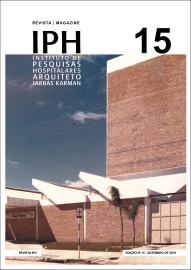Publications IPH Magazine Revista IPH Nº 15 Grid-tie photovoltaic systems: brief history and its implementation in the hospital environment
Grid-tie photovoltaic systems: brief history and its implementation in the hospital environment
Eng Rafael Kotchetkoff Carneiro, Ana Carolina de Oliveira Sousa, Eng Lucas Teixeira, Eng Pedro Carneiro
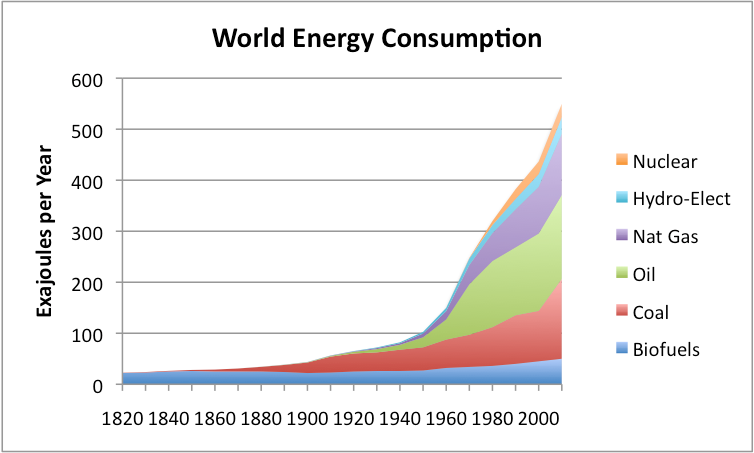
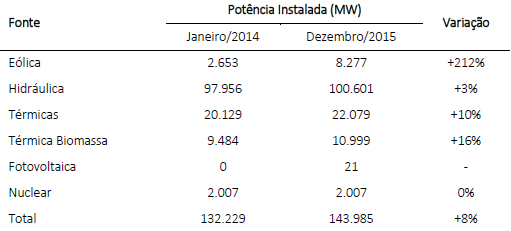
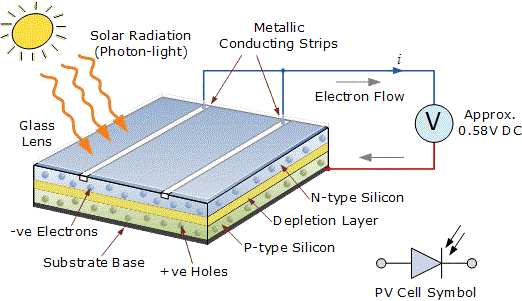
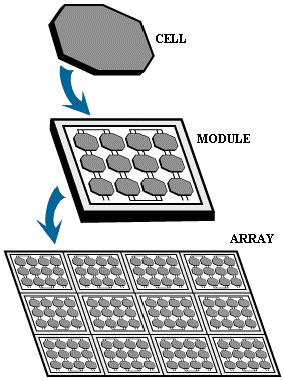
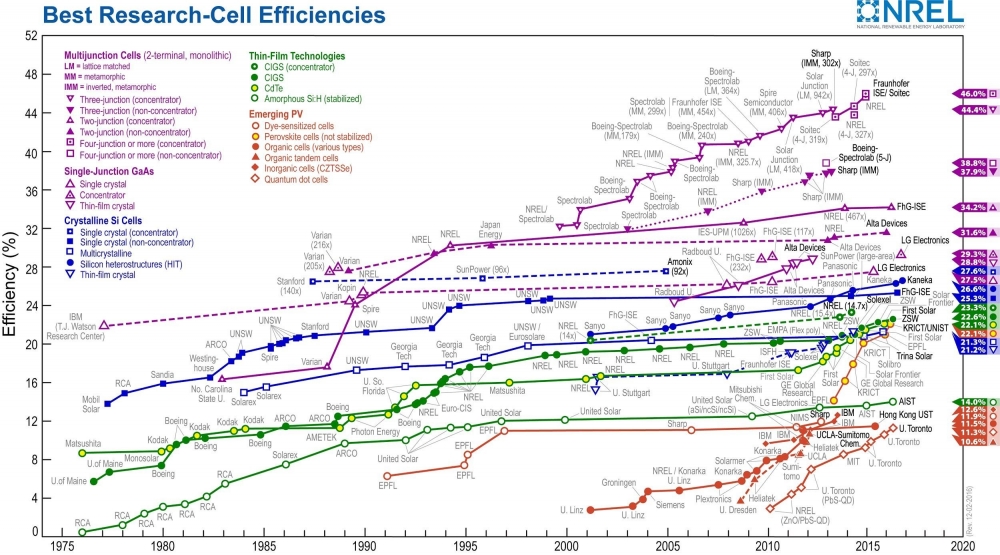
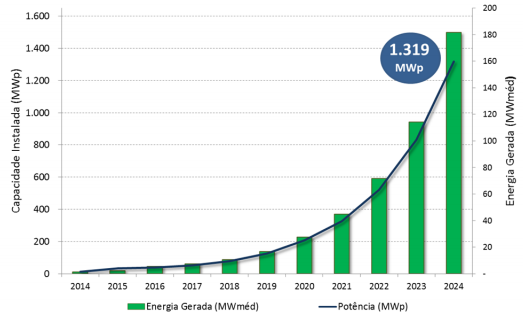
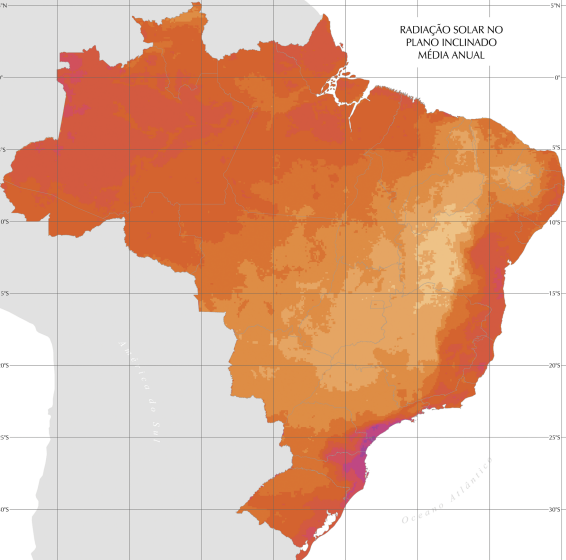

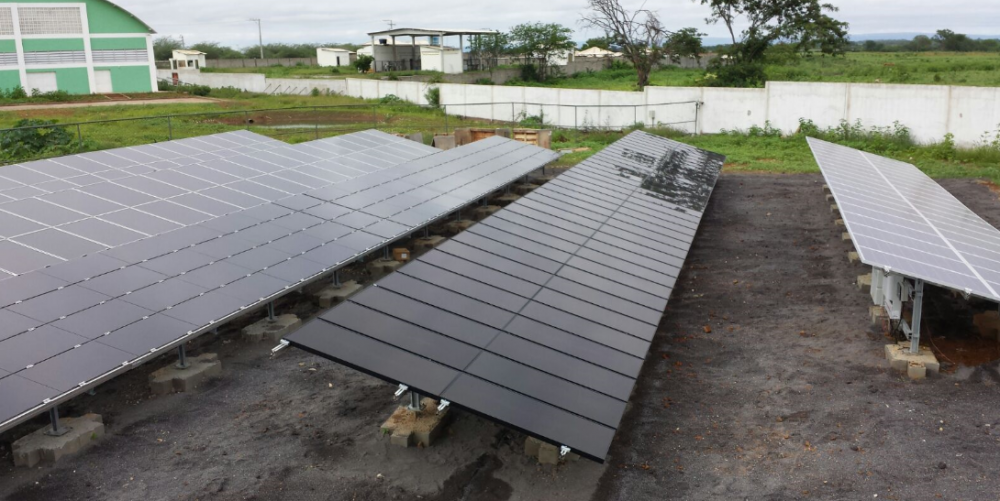
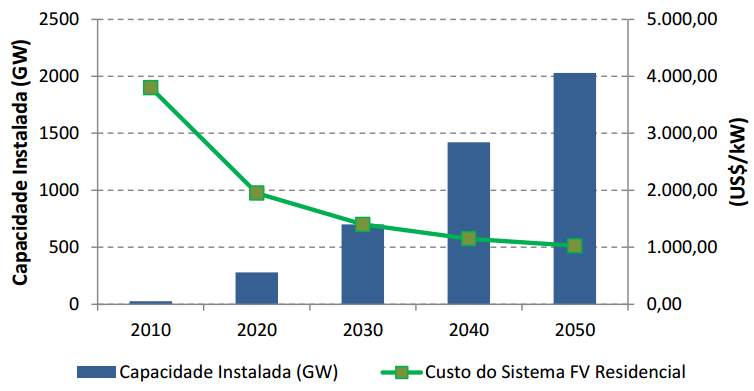
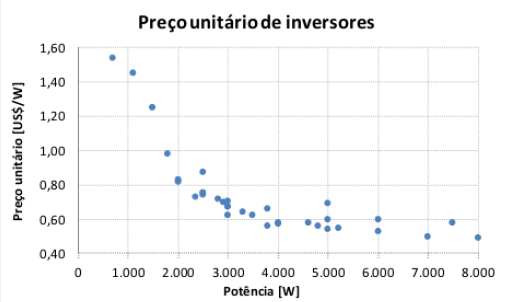
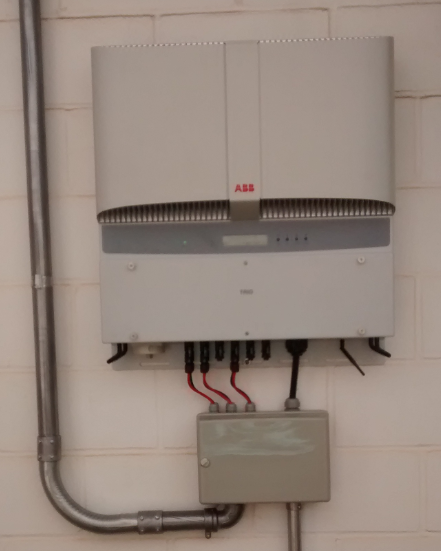
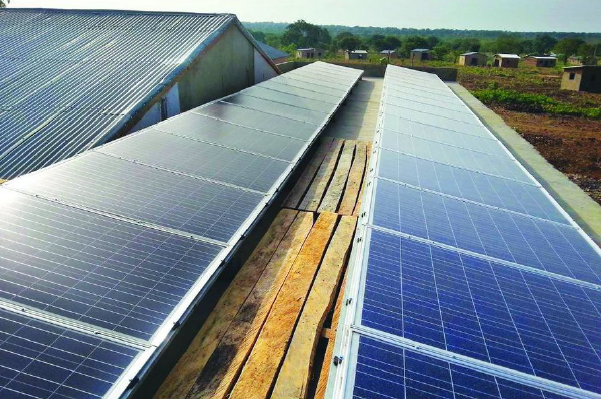


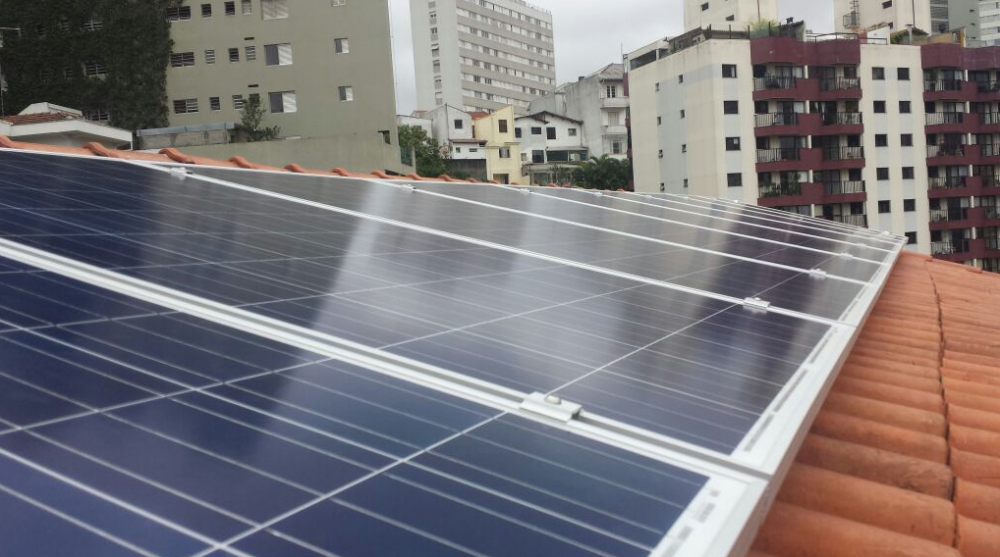

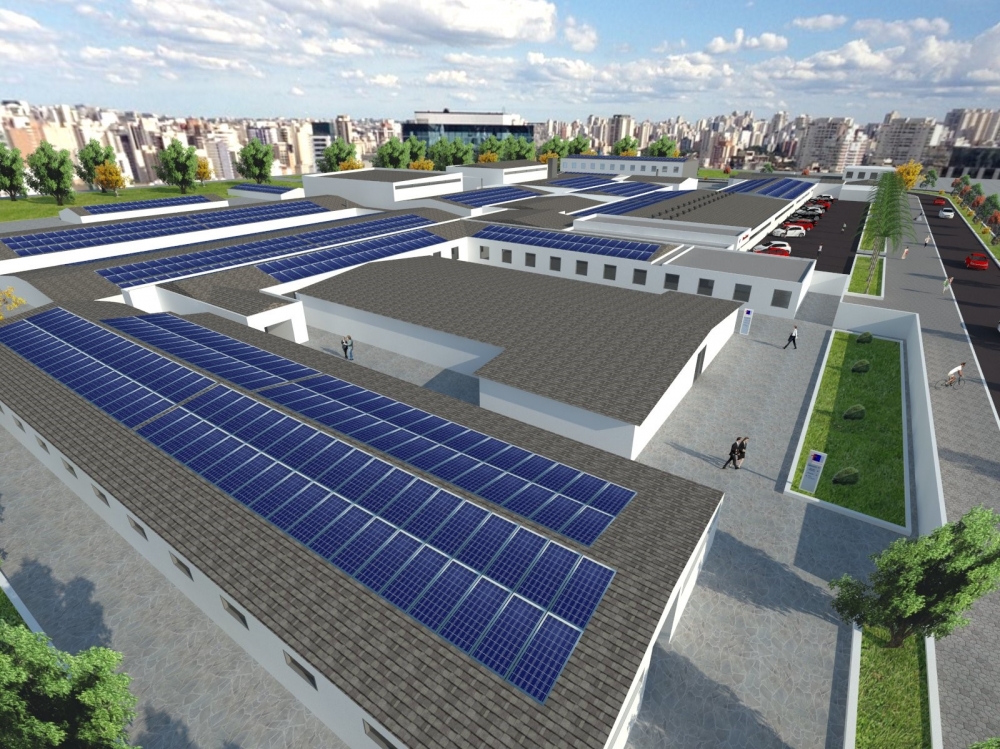
Categories of the issues we covered
This paper has been divided into three great categories:
- Contextualization of the energy industry
- Technical review and integration with hospitals
- Case study and decision-making process
Therefore, we hope to help those designing hospital plants; healthcare directors; and every professional involved in organizing and running a hospital to have a broader understanding of the reasons for implementing a photovoltaic system; the low technical risks associated to it; and the decision-making process that enables such execution.
Contextualization
The increasing global consumption of energy
Men has changed its perception regarding electrical energy throughout time, from an unknown event, in early contemporary era, to a key element in less than half a century.
Currently, increased energy consumption means economic growth and better quality of life. Nonetheless, the downsides are also a reality, especially with respect to environmental issues.
Global energy consumption has skyrocketed about 5,000% since the year 1800 and over 100% over the last 30 years, chiefly after Chinese economic restructuring and the expansion of emerging countries (IEA, 2016, p.8).

Increase of power generation by sort over the years.
Source: Based on Vaclav Smil estimates from Energy Transitions: History, Requirements and Prospects together with BP Statistical Data for 1965 and subsequent
Environmental impacts resulting from electrical energy
The environment has been suffering from massive impacts caused by the boost of electrical power worldwide, which is responsible for one quarter of the direct sources of greenhouse gas emission (IPCC, 2014, p. 44), mainly due to the construction of power plants and transmission lines, besides the use of the so-called dirty sources of energy, such as coal.
Since energy consumption will certainly keep growing, as well as environmental concerns, the research and development of renewable energy sources is developing progressively. If, in the early 70's, roughly 0,1% of energy came from renewable sources, nowadays this number has increased in 14 times. (IEA, 2016, p.6)
In the light of this context and once renewable energy has become cheaper and less centralized when compared to big power stations, new possibilities have aroused for the generation of energy with the Shared Distribution (W El-Khattam, 2004, p. 119).
Alternative energy in Brazil
In 2012 Brazil implemented the Energy Compensation System, which laid the foundations for a set of market rules for the shared generation of alternative sources, largely when referred to photovoltaic solar energy and wind power (ANEEL, 2012).
Since then, it has been possible to install a photovoltaic system connected to the regular power network in general buildings and houses, which ensure more time of and cheaper energy supply.
As a consequence, Brazil has improved its capacity to provide photovoltaic power, going from zero to 21MW between 2014 and 2015, as well as wind power and other sources of renewable energy (TOLMASQUIM, p.279).

Installed power 2015/2016 by category.
Source: CCEE, 2015b, 2016
Solar energy acts at the same time as direct and indirect source of power for almost all the other types of energy found in nature and that we use to generate electrical energy. Solar photovoltaic power runs by directly changing solar radiation into electrical power, however thermal, hydro, wind, biomass, and tidal power are indirectly generated by solar energy.
The use in hospital environments
Hospitals handle a number of electromedical equipment (also known as medical and hospital equipment), several light bulbs, and there is usually a heavy use of air-conditioning, which leads to an increasingly high use of electrical energy that financially impact a hospital's budget, money that could be better used to invest in hospital's target activity. By using photovoltaic systems, primarily the ones connected to the network, producing its own energy and reducing electricity consumption provided by the supplier the hospital will greatly reduce its costs and carbon emission.
Principles for operation
The photoelectric effect and the annus mirabilis of physics
The photoelectric effect was first observed by the French physicist Edmundo Bequerel in 1839 (NASA, 2002), who discovered that certain materials produced electric current when exposed to the sun.
Some decades later, in the year 1905, physics had its annus mirabilis, mainly after Albert Einstein published his most important articles. In the most famous one, Einstein describes the famous equation E = m.c², which relates energy to mass. Despite the popularity of his equation and his fame due to his study on the Theory of Relativity, it was Einstein's work describing the nature of light in the photoelectric effect (EINSTEIN, 1905) that won him the Nobel Prize in Physics and triggered the modern age of the study of photovoltaic energy.
In short, the generation of electric energy happens when the photons, coming largely from the sun, supply enough energy for the electrons of the materials to move, allowing the generation of electric current. It is noteworthy that it is not the heat of the sun that causes electrical energy to be produced in this case, but the light and the solar radiation that reach the material responsible for such transformation.
Physical construction of photovoltaic modules
Most of photovoltaic cells are produced via semiconductor material, which are widely used within the electronic industry to manufacture chips.
The cells are generally made of silicon coated with a thin layer of antireflective material, usually a special type of glass, which provides good transparency, weather and impact resistance.
For the construction of solar cells, a silicon wafer is covered in a way as to generate an electric field in the material. When light is incident upon the cell, the electrons are released from their atoms in the semiconductor, generating current.

How a photocell works.
Source: Adapted from Alternative Energies Photovoltaic "Solar Cell for Photovoltaic Solar Panels.pdf"
The intensity of current produced varies according to the incidence of solar radiation. In the event of a source of shadow, the generated electric current lessens, therefore cutting back on the power provided by the module.
History of the modern photovoltaic cell
A collection of photovoltaic cells electrically connected over a base is called photovoltaic module, the serial connection of such modules is called a string; finally, a set of strings give rise to a photovoltaic array.

Interconnections between photovoltaic cells and modules.
Source: Science Beta NASA - How do Photovoltaics Work? August, 6th, 2008.
The first photovoltaic module was built in 1954 by Bell Laboratories and it was considerably expensive to be produced on a large scale. Five years later, this technology was used to provide electrical energy to NASA's spacecraft and satellites and, thanks to this investment, the cost of producing photovoltaic modules has been reduced.
Soon after, in the seventies, there was the global oil crisis, making room for the recognition of alternative sources of energy.
Currently, the research of more efficient technologies and materials to produce the photoelectric effect is continuously expanding according to a study carried out by the American National Renewable Energy Laboratory (NREL, 2014).

Source: National Renewable Energy Laboratory 2014.
Tendencies in the photovoltaic industry
National overview
In 2012, the Brazilian Electricity Regulatory Agency (ANEEL) introduced the Normative Resolution # 482, later replaced by the updated Normative Resolution #687/2016, which set the general conditions for the micro and mini-generation distribution in the country, as well as for the electrical energy compensation system.
This resolution allows the clients from energy suppliers to have their own generation systems and to trade their surplus for energy credit, which can be used to subside further electricity bills up to 60 months.
It is noticeable that the photovoltaic energy generation industry is one of the fastest growing Brazilian ones, even during the country's recent economic crisis, showing a projection of growth of 300% in 2016 (MEYER, 2016).
Between 2013 to 2015, the number of photovoltaic solar systems in Brazil grew more than 70 times. Even if the number of facilities is numerically low when compared to the countries with a more consolidated industry, such as Germany, China and the United States, the Energy Research Company (EPE) forecasts an exponential growth until to 2024 (EPE, 2014, PDEE pp. 383).

Source: Energy Research Company 2014
Brazilian potential
Brazil is a country with high levels of insolation and, therefore, is believed to become a well-stablished generator of photovoltaic solar energy.
German insolation levels, one of the largest photovoltaic producers in the world, are lower than Brazilian's; the best German insolation area presents only two thirds of the levels found in Brazilian worst area (VILLALVA, 2015).
In Brazil, the Northeast and Central-West areas receive the highest solar insolation, above all in the countryside of Bahia. The Brazilian National Institute of Space Research (INPE) has designed the Brazilian Solar Atlas (INPE, 2006, p.40), which is shown below considering the global solar radiation, inclined plan, annual average.


Source: Brazilian National Institute of Space Research, 2006

Research Photovoltaic Dam Irecê, Bahia, one of the areas with the highest levels of insolation in Brazil
Source: Solstício Energia, 2015
Global perspective
International Energy Agency (IEA) is estimating an exponential growth of the installed capacity of photovoltaic energy. It is estimated that by 2050 there will be about 2,000 GW installed, more than 100 times the total installed capacity in Germany in 2010.
According to IEA data, by 2020, residential and commercial systems will account for approximately 60% of photovoltaic generation; photovoltaic plants will account for 30%; and isolated systems, 10%. This growth is a result of increased demand for small systems due to a fall in cost of close to 50% between 2010 and 2020 (IEA, 2012).

An estimate growth of installed capacity and costs until 2050
Source: EPE study based on IEA (2012)
An analysis of the types of photovoltaic systems
The grid-tie photovoltaic systems differ from the off-grid ones in three primary aspects: type of equipment; purpose of use; and associated cost.
| Type of system | Used equipment | Purpose | Cost |
| Grid-tie | Photovoltaic panels Frequency inverter |
Cheaper electricity bill
Minimized impact on the environment
To prevent increasing fees
|
Low |
| Off-grid |
Photovoltaic panel
Batteries
Charge regulator
Frequency inverter
|
To generate power in areas without electrical supply
Independence from electrical suppliers
|
High |
Source: Solstício Energia, 2017
There are a number of advantages the grid-tie systems offer: higher guarantee of energy supply during periods of no insolation; cheaper installation; regulated market; cheaper electricity bill; less environmental impact; low-budget maintenance cost compared to off-grid systems since it does not require the use of batteries.
The purpose of the photovoltaic frequency inverter
Just like batteries and power unities, the photovoltaic modules generate tension and ongoing current, therefore, to supply power to common equipment, they must carry transform direct current into alternating current. The equipment responsible for this transformation is the photovoltaic inverter.
Inverters are then responsible for the connection to the grid and it is through them that the energy supplied by the panels feeds the light bulbs and other equipment connected to the conventional electricity grid.
Considering its different uses, there are some topologies of photovoltaic inverters, as presented below.
| Type of Inverter | Advantages | Disadvantages | Regular use |
| Micro-inverter | To optimize small arrangements of panels and individual panels Placed underneath the photovoltaic panel |
Higher cost of scalability Higher maintenance cost |
Few panels
Panels with multiple orientations
More presence of shadow
|
| String e Multi-string inverter |
To optimize small arrangement of panels
It offers a range of potency levels
Well established market
A good variety of models made available
|
Low-level optimization in the occurrence of shadow |
Roof installation
Commercial, residencial and industrial installations
|
| Central inverter | An exclusive inverter for a great arrangement of panels | It requires an extensive area It requires arrangements of panels alike |
Photovoltaic power stations |
Source: Solstício Energia, 2017
Over the years and needing to reduce the cost of inverters, several manufacturers have emerged and consolidated themselves in the market with various technologies. Thus, the cost per Watt (unit power) of the inverter has plummeted in the last decades (GERALDI, 2013), making it easier to purchase the equipment and reducing the overall cost of implementing photovoltaic systems.

Source: EPE - Energy Research Company, "An Analysis concerning the Implementation of Solar Generation in the Brazilian Electric Matrix," Rio de Janeiro, 2012

Installation of a string photovoltaic inverter
Source: Solstício Energia 2016
Inverters in the hospital environment
The most suitable types of inverters for hospital environment use are the micro-inverters and the string inverters, the latter being generally the most cost-effective one.
Both types require little physical area of usage, produce very low noise, below 50dB (A), and need simple shelter infrastructure, sometimes it is even possible to expose them outdoors.
Therefore, the necessary adjustments to shelter the equipment are minimal whether for already existing hospitals or for the ones being planned.
Interference with medical and hospital equipment
A constant concern within healthcare facilities is the safety of equipment, its operators and the patients in contact with them; hence the reason for also analyzing the operation of medical and hospital equipment whenever there are photovoltaic generators.
Sources of electrical interference with medical and hospital equipment and its associated risks
There are three leading sources of electrical interference that might impact medical and hospital equipment, which may cause inconsistent measurements and material loss to the equipment, besides harming the treatment or putting the like of a patient at risk (AMARAL, 2012).
| Causes for electrical interference | Source of the interference | Associated risks |
| Low-quality supply of electrical energy | Power supplier | Flaws or malfunctioning of medical and hospital equipment, which might affect diagnosis and put patients at risk |
| Electric transient | Direct and indirect action of lightning | Flaws, malfunctioning and structure damages of medical and hospital equipment, which might affect diagnosis and cause material loss to the hospital, besides putting the patient's life at risk |
| Electromagnetic interference | Equipment lacking cell regulation | Flaws, misreading, and malfunctioning of medical and hospital equipment, which might harm diagnosis and put the patient's life at risk |
Source: Solstício Energia 2017 and AMARAL 2012 p.43
The photovoltaic inverter and the interference with medical and hospital equipment
In view of the causes of interference shown in the table above, it is possible to conclude a high-quality photovoltaic inverter will hardly harm either patients or medical and hospital equipment.
In addition, the sale of inverters in Brazil is only made after INMETRO (Brazilian Regulatory Agency) certifies it, which ensures inverters follow all Brazilian rules regarding a safe operation. If the inverter uses Wi-Fi communication, ANATEL (Brazils Telecommunications Agency) must also authorizes its use.
| Causes for electrical interference | Strategies to mitigate problems with photovoltaic inverters |
| Low-quality supply of electrical energy | To use only inverters certified by INMETRO Automatic power cut in case of low-quality energy |
| Electric transient | Anti-panic devices linked to the equipment but with independent installation |
| Electromagnetic interference |
Wi-Fi modem certified by ANATEL
Coat equipment with electromagnetic protection
|
It is also noteworthy that the source of power that feeds the electrical equipment little alters its operation.
Therefore, for instance, a computerized tomography machine's operation is the same regardless of the source of its electrical energy, which could be photovoltaic; hydroelectric; or gas-fired.
How to introduce a photovoltaic energy system and estimate the electrical infrastructure for hospitals
There are many ways to participate in ANEEL's Electric Energy Compensation System. The simplest one is by implementing a photovoltaic system in areas with few sources of shadow within the hospital, such as roofs and parking lot coverage. Nonetheless, it is also possible to implement the system through quotas of a solar condominium and remote consumption, in which the photovoltaic plant is not placed in the unit of consumption.
Designing and estimating the electrical infrastructure for the establishment of photovoltaic systems within hospital environments
Generally speaking, photovoltaic systems require little intrusive infrastructure, which often leverages an area previously underused, such as roofs and parking covers.
Moreover, the interface connecting photovoltaic inverters to the hospital power grid is relatively simple, requiring only appropriate cabling and a convenient place to shelter the inverter, which may even be exposed to weather changes.
Example of a hospital suitable for receiving grid-tie systems
A model hospital would have some relatively simple technical aspects to receive a photovoltaic system with quality. It is important to emphasize that the items listed make it easier to implement photovoltaic systems but are not sine-qua-non conditions to make it possible.
| Technical aspects | Advantages |
| No shadow over the roof Northbound roof and/or inclined closely towards the place latitude |
More energy produced by the panels |
| High-quality roofing tiles High-quality roof structure |
Safer fixing structure |
| Electrical conduits from the roof to inverter sites | Besides ensuring safety, preserves electric cabling by not exposing it |
| Provision of power grid towards the inverter site | Besides making the process easier, it increases the quality of installation |
| Restrict access to the inverter site Trained maintenance team |
It helps mitigate risks during operation |
Even if an already existing hospital fails to provide such technical aspects, chances are the grid-tie will still be viable.
Implementation in hospital environments around the world
There are already several hospitals around the world with successful experiences in the implementation of photovoltaic systems of various types and sizes.
There are hospitals exclusively powered by isolated systems from the grid, which fully supply the hospital and store the energy in batteries, especially in places where the electrical grid is non-existent or of poor quality.
There are also cases where the system is connected to the grid by a structure of energy credit and sale, like the Belgian case described below, in which 95% of the energy consumed comes from the grid-tie system and then the valued is discounted from the power bill.

Hospital that received a donation of a 19kW off-grid system in northern Benin, which supplies the warehouse and the local cafeteria
Source: MORAGUES, 2015

Photovoltaic system connected to the 425kW grid in Soignies, Belgium, in an existing hospital, which reduces electricity costs by 95%
Source: TECSOL 2014

A system connected to a 266kW grid with 38 string inverters in Pialba, Australia, which has been designed considering the photovoltaic system from its inception and has been optimized to receive the grid-tie
Source: ABB, 2013

Photovoltaic system connected to the grid with 2.34 kWp of panels and 3 kW inverter, located in São Paulo, Brazil, at the headquarters of the Hospital Research Institute Jarbas Karman
Source: Solstício Energia, 2016
Impact on the Electric Bill - Brief Economic Analysis
To understand the impact photovoltaic systems will have on the energy bills of a hospital, it is necessary to first explain how most Brazilian hospitals are charged. ANEEL generally estimates the classification of customers in the captive energy market - consumer units that buy energy directly from the suppliers or licensees - in two large groups: customers that are connected in low voltage, i.e. customers B, and clients connected in average / high voltage, i.e. customers A. How each of these units is charged varies according to their respective class.
| B1 - Residencial | A1 (230 kV or higher) | |
| B2 - Rural | A2 (88 to 138 kV) | |
| B2 - Rural Cooperative | A3 (69 kV) | |
| B2 - Public irrigation | A3a (30 to 44 kV) | |
| B4 - Public illumination | A4 (2,3 to 25 kV) | |
| B4a - Supply chain | AS (underground) | |
| B4b - Light bulb |
Fees according to the consumer unity and connection voltage.
Source: MME, 2011
Consumer units that have contracted demand above 75 kW must be connected in at least medium voltage and classified from subgroup A4, as above. Thus, for the purpose of this study, a standard case is adopted where the hospital is classified before the concessionaire in the subgroup A4, and, in addition, has chosen green charging. The charging possibilities within the A4 subgroup are: conventional - it benefits small and medium-sized establishments; green - benefits medium and large sized establishments that have a consumption at controlled peak hours, where the fee is higher; and blue - benefits medium and large establishments that need to consume energy during peak hours. The more specific differences between these tariff subgroups will not be addressed in that article.
In general, excluding other possible charges and fines, the value of the energy bill of an A4 Verde consumer unit shall be calculated according to equation 1.

Where C represents the energy consumption in kWh; D, the contracted demand in kW; TE, the energy tariff; TUSD, the distribution system use tariff; FP, off-peak; P, peak hours; % ICMS, % PIS and % COFINS represent the tax rates that affect the energy bill.
As one of the goals of acquiring a grid-tie system is to reduce the electric bill, within the scope of the Electric Energy Compensation System provided by ANEEL, it is clear from equation X1 that, by reducing the CFP and CP variables, the value of the account reduces energy consumption in the same proportions. This is possible because, for the whole national territory, the PIS and COFINS taxes are levied on the amount consumed, and the credits generated are written off.
Besides, 22 states of the nation have already adhered to the exemption of ICMS for micro and distributed mini-generation.
In general, the financial return for the purchase of an grid-tie for a hospital classified as Green A4 is close to 7 years, depending on variables such as energy tariffs, hospital consumption profile, and the power of the system to be installed. The price of larger systems, normalized per unit of power, is usually lower by the scale gain of the project.
However, considering that photovoltaic solar generation happens generally at a time considered off-peak, in order for the system to be completely viable, with paybacks in the order of 5 years, it is necessary to have a generation higher than the consumption of the unit. This is because ANEEL estimates that to use the credits generated during off-peak hours, the relation between the energy tariffs (TE) of each should be respected. Thus, it is interesting for the hospital, which pays a ratio of about 3 to 4 times to the full P rate compared to FP, to acquire a larger system, since this relation does not hold when considering the energy. It is common to find a factor of 1.4 times, comparing PET with TFP.
The market estimate for grid-tie photovoltaic systems for 2019 is positive, not only because of increasing acquisitions by Brazilians - today there are more than 30,000 consumer units with distributed generation - but also because, with the global expansion of technology, prices are plunging. Each kWp - power unit commonly used for photovoltaic systems - is capable of generating around 1400 kWh per year, and is costing today, for larger systems, around 1,000 US dollars.
Considering medium-sized hospital with an average monthly energy consumption of 100,000 kWh, a system larger than 850 kWp would be needed for full credit generation, again remembering that the ratio of generation to consumption rebate tip is not 1: 1. Thus, the implementation cost for this system would be close to US 15 million dollars, with a 5-year discounted payback. It should always be taken into account that the energy tariff in Brazil is not stable and has variations that can be avoided with the acquisition of a photovoltaic system, such as tariff flags. The acquisition of a grid-tie system is therefore not only a safe investment - the system has a 25-year life expectancy - but also a security in relation to subsequent increases in energy charging.
Case studies in existing or planned hospitals in Brazil
In terms of the architectural model, hospitals are usually defined by the horizontality of construction. The need for expansion over time of operation and the physical division between specialties lead to a set of independent blocks, both in the design of the roof and in the electrical connections, which interferes with the compatibility of the roofs for installation and demand a different form of sizing that follows these concepts.

System connected to the 650kW network with 11 string inverters in Araguaína, Tocantins, in an illustrative image that composes the photovoltaic project.
Source: Solstício energia, 2015
In discontinuous buildings such as hospitals, it would be ideal to develop the project considering a physical division of the system, established by the layout and distance of the roofs. In this way, it is possible to optimize the amount of cables and other inputs used to reduce the time and impact of the installation of the hospital routine and to increase the reliability of the system operation.
In the case of the 124.8kWp photovoltaic system installed in Hospital Israelita Albert Einstein, in São Paulo - SP, the installation site of the panels was chosen due to the available green roof area. There is a symbiotic integration between photovoltaic and green roof systems, where there is a reduction of temperature and increase in air circulation under the photovoltaic modules, and a reduction of direct sunlight on the lawn.
Other criteria that were taken into account for the planning of the installation of this photovoltaic system, besides the location of the modules, were those previously mentioned, as the location of the electrical connection point, electric room availability for the inverters, with restricted access, among others.
It also became necessary to study the selectivity and adjustment of the electrical protection equipment in the connection frame of the Hospital substation, due to the criticality of the connection point, which also fed the blood bank. In the study of selectivity, it is taken into account if, in case of any electrical fault of the photovoltaic system, there will be consequences of the electric protection in other circuits, with consequent interruption in the power supply.
Consequently, the study carried out contemplated the readjustment of the protection devices to act selectively to ensure an error or electrical problem in the photovoltaic system causes interruption of energy only in the photovoltaic system thus not affecting the operation of any other power circuit.
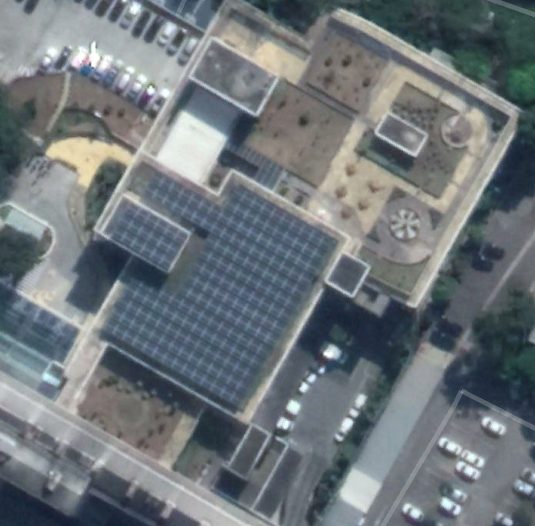 |
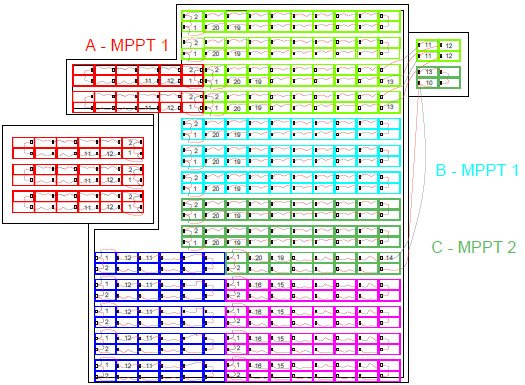 |
 |
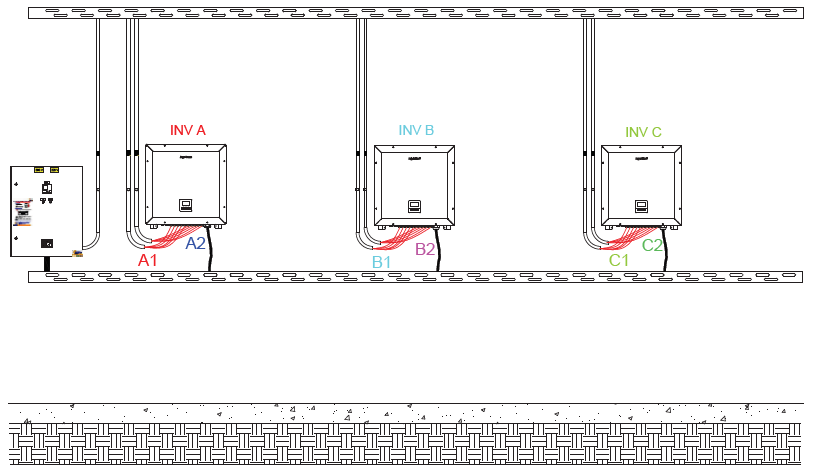 |
 |
System connected to the 124.8 kWp grid with 3 string inverters in São Paulo, SP, in comparative and illustrative images of the execution and design of the photovoltaic system at Hospital Israelita Albert Einstein - HIAE.
Source: Solstício energia, 2018 and Google Earth (Digital Globe), 2018
Reiterating the Feasibility of Implementing Photovoltaic Systems in Hospitals
Throughout this article, we have shown the possibility of generating clean energy in loco for the hospital environment, contextualizing with the global growth of photovoltaic energy and its consequence reduction of cost to the point where investment in solar energy becomes financially interesting.
We also presented the principle under which photovoltaic systems run and their main components, exploring key issues in the integration of energy generation in hospitals and reiterating the technical and financial feasibility of this type of project.
References and Additional Bibliography
Agência Nacional de Energia Elétrica (Brasil). Atlas de energia elétrica do Brasil / Agência Nacional de Energia Elétrica. 3. ed. Brasília: Aneel, 2008. Disponivel em: <http://www2.aneel.gov.br/arquivos/pdf/atlas_par1_cap2.pdf> Acesso em: 15/01/2017
AMARAL, H L M. Interferências Eletromagnéticas. Transitórios e Qualidade da Energia: impacto nos equipamentos eletromédicos e desenvolvimento de um gerenciador de energia. 2012.
CAPETTA, D. PEA 5730 - Planejamento Integrado de Recursos. Tema 21. 2006. Disponível em: <www.seeds.usp.br/pir/pea5730/arquivos/tema21_2006.ppt> Acesso em: 15/01/2017
Empresa de Pesquisa Energética. Série Estudos da Eficiência da Energética - Nota Técnica DEA 10/14 - Consumo de Energia no Brasil - Análises Setoriais, 2014. Disponível em: <http://www.epe.gov.br/mercado/Documents/S%C3%A9rie%20Estudos%20de%20Energia/DEA%2010-14%20Consumo%20de%20Energia%20no%20Brasil.pdf > Acesso em: 15/01/2017
Empresa de Pesquisa Energética. Série Recursos Energéticos - Nota Técnica DEA 19/14 - Inserção da Geração Fotovoltaica Distribuída no Brasil - Condicionantes e Impactos, 2014. Disponível em: <http://www.epe.gov.br/mercado/Documents/S%C3%A9rie%20Estudos%20de%20Energia/DEA%2019%20-%20%20Inser%C3%A7%C3%A3o%20da%20Gera%C3%A7%C3%A3o%20Fotovoltaica%20Distribu%C3%ADda%20no%20Brasil%20-%20Condicionantes%20e%20Impactos%20VF%20%20(Revisada).pdf> Acesso em: 15/01/2017
Operador Nacional do Sistema Elétrico - ONS. Histórico da Operação - Geração de Energia. Disponível em: <http://www.ons.org.br/historico/geracao_energia.aspx> Acesso em: 15/01/2017
PAVLOVIC, T M, MILOSAVLJEVIC, D D, RADIVOJEVIC, A R e A. PAVLOVIC, M A. Comparison and Assessment of Electricity Generation Capacity for Different Types of Photovoltaic Solar Plants of 1 MW in Sokobanja, Serbia. Thermal Science, Year 2011, Vol. 15, No. 3, pp. 605-618
PINHO, J T e GALDINO, M A - CEPEL - CRESESB. Manual de Engenharia para Sistemas Fotovoltaicos, 2014. Disponível em: <www.cresesb.cepel.br/publicacoes/download/Manual_de_Engenharia_FV_2014.pdf> Acesso em: 15/01/2017
SILVEIRA, A H. Avaliação do Potencial de Conservação de Energia no Setor Hospitalar da Região Sul do Brasil, 2008. Disponível em: <http://meriva.pucrs.br/dspace/bitstream/10923/3220/1/000401161-Texto%2bCompleto-0.pdf> Acesso em: 15/01/2017
TVERBERG, G. World Energy Consumption Since 1820 in Charts. In: Our Finite World, 2012. Disponível em: <https://ourfiniteworld.com/2012/03/12/world-energy-consumption-since-1820-in-charts/> Acesso em: 15/01/2017
U.S. Energy Information Administration Office of Energy Analysis U.S. Department of Energy Washington, DC 20585. International Energy Outlook 2016 With Projections to 2040. 2016. Disponível em: <http://www.eia.gov/outlooks/ieo/pdf/0484(2016).pdf> Acesso em: 15/01/2017
Send by e-mail:
